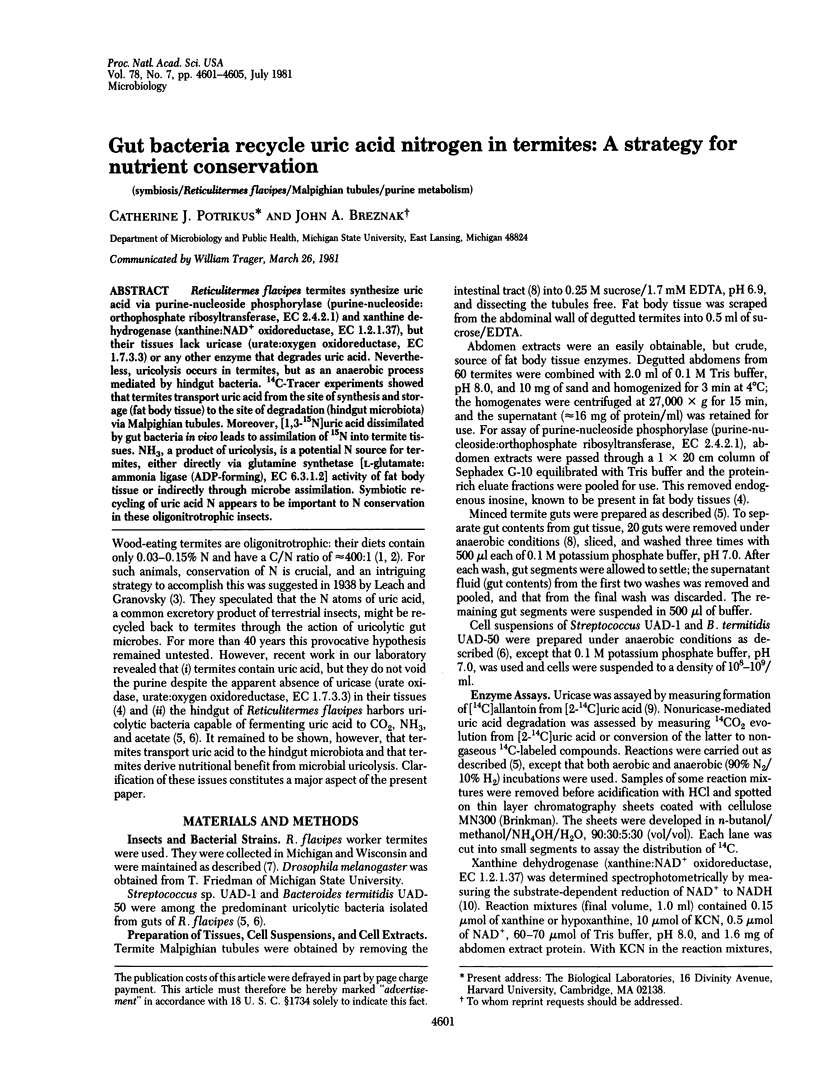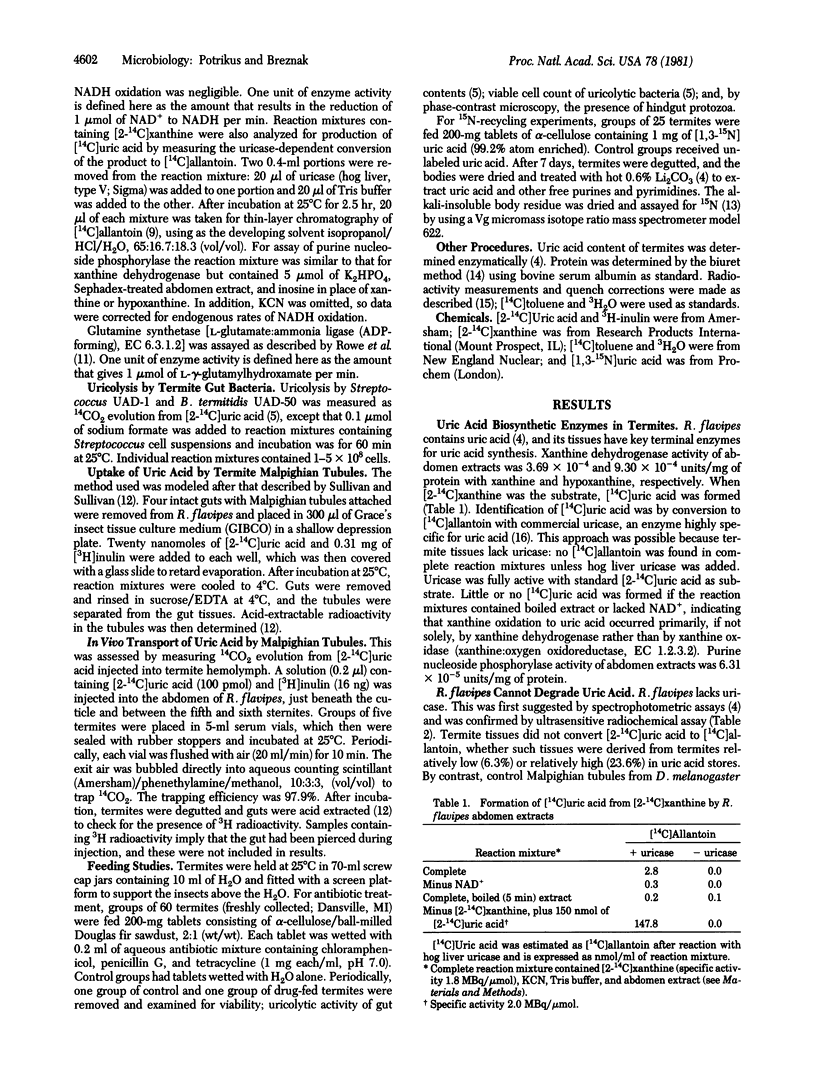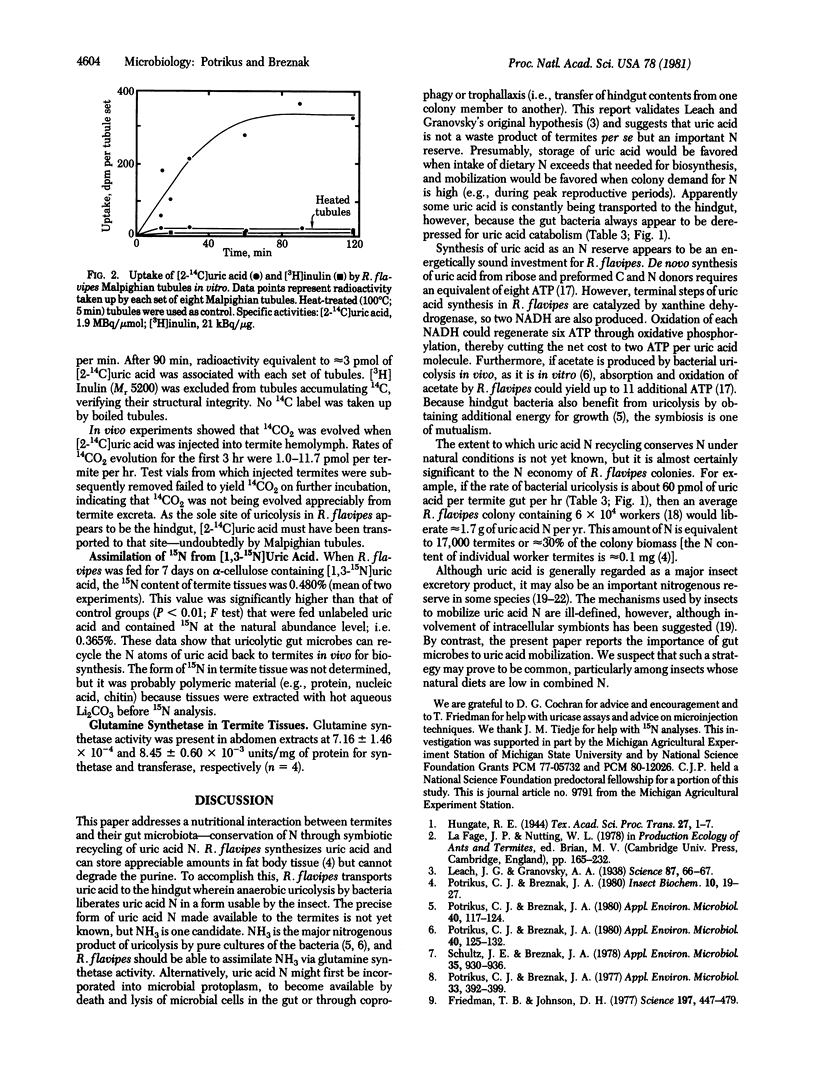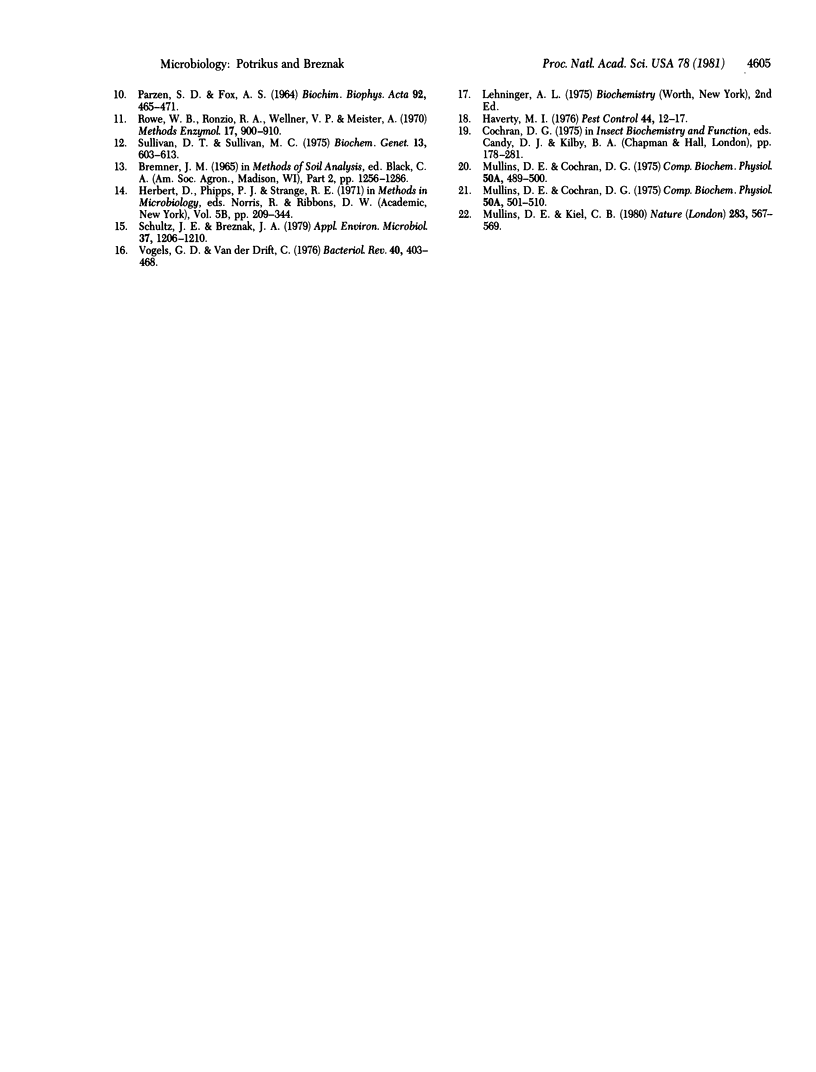Abstract
Reticulitermes flavipes termites synthesize uric acid via purine-nucleoside phosphorylase (purine-nucleoside: orthophosphate ribosyltransferase, EC 2.4.2.1) and xanthine dehydrogenase (xanthine:NAD+ oxidoreductase, EC 1.2.1.37), but their tissues lack uricase (urate:oxygen oxidoreductase, EC 1.7.3.3) or any other enzyme that degrades uric acid. Nevertheless, uricolysis occurs in termites, but as an anaerobic process mediated by hindgut bacteria. 14C-Tracer experiments showed that termites transport uric acid from the site of synthesis and storage (fat body tissue) to the site of degradation (hindgut microbiota) via Malpighian tubules. Moveover, [1,3-15N]uric acid dissimilated by gut bacteria in vivo leads to assimilation of 15N into termite tissues. NH3, a product of uricolysis, is a potential N source for termites, either directly via glutamine synthetase [L-glutamate:ammonia ligase (ADP-forming), EC 6.3.1.2] activity of fat body tissue or indirectly through microbe assimilation. Symbiotic recycling of uric acid N appears to be important to N conservation in these oligonitrotrophic insects.
Keywords: symbiosis, Reticulitermes flavipes, Malpighian tubules, purine metabolism
Full text
PDF




Selected References
These references are in PubMed. This may not be the complete list of references from this article.
- Leach J. G., Granovsky A. A. NITROGEN IN THE NUTRITION OF TERMITES. Science. 1938 Jan 21;87(2247):66–67. doi: 10.1126/science.87.2247.66-a. [DOI] [PubMed] [Google Scholar]
- PARZEN S. D., FOX A. S. PURIFICATION OF XANTHINE DEHYDROGENASE FROM DROSOPHILA MELANOGASTER. Biochim Biophys Acta. 1964 Dec 23;92:465–471. doi: 10.1016/0926-6569(64)90006-9. [DOI] [PubMed] [Google Scholar]
- Potrikus C. J., Breznak J. A. Anaerobic degradation of uric Acid by gut bacteria of termites. Appl Environ Microbiol. 1980 Jul;40(1):125–132. doi: 10.1128/aem.40.1.125-132.1980. [DOI] [PMC free article] [PubMed] [Google Scholar]
- Potrikus C. J., Breznak J. A. Nitrogen-fixing Enterobacter agglomerans isolated from guts of wood-eating termites. Appl Environ Microbiol. 1977 Feb;33(2):392–399. doi: 10.1128/aem.33.2.392-399.1977. [DOI] [PMC free article] [PubMed] [Google Scholar]
- Potrikus C. J., Breznak J. A. Uric Acid-Degrading Bacteria in Guts of Termites [Reticulitermes flavipes (Kollar)]. Appl Environ Microbiol. 1980 Jul;40(1):117–124. doi: 10.1128/aem.40.1.117-124.1980. [DOI] [PMC free article] [PubMed] [Google Scholar]
- Schultz J. E., Breznak J. A. Cross-Feeding of Lactate Between Streptococcus lactis and Bacteroides sp. Isolated from Termite Hindguts. Appl Environ Microbiol. 1979 Jun;37(6):1206–1210. doi: 10.1128/aem.37.6.1206-1210.1979. [DOI] [PMC free article] [PubMed] [Google Scholar]
- Schultz J. E., Breznak J. A. Heterotrophic bacteria present in hindguts of wood-eating termites [Reticulitermes flavipes (Kollar)]. Appl Environ Microbiol. 1978 May;35(5):930–936. doi: 10.1128/aem.35.5.930-936.1978. [DOI] [PMC free article] [PubMed] [Google Scholar]
- Sullivan D. T., Sullivan M. C. Transport defects as the physiological basis for eye color mutants of Drosophila melanogaster. Biochem Genet. 1975 Oct;13(9-10):603–613. doi: 10.1007/BF00484918. [DOI] [PubMed] [Google Scholar]
- Vogels G. D., Van der Drift C. Degradation of purines and pyrimidines by microorganisms. Bacteriol Rev. 1976 Jun;40(2):403–468. doi: 10.1128/br.40.2.403-468.1976. [DOI] [PMC free article] [PubMed] [Google Scholar]


